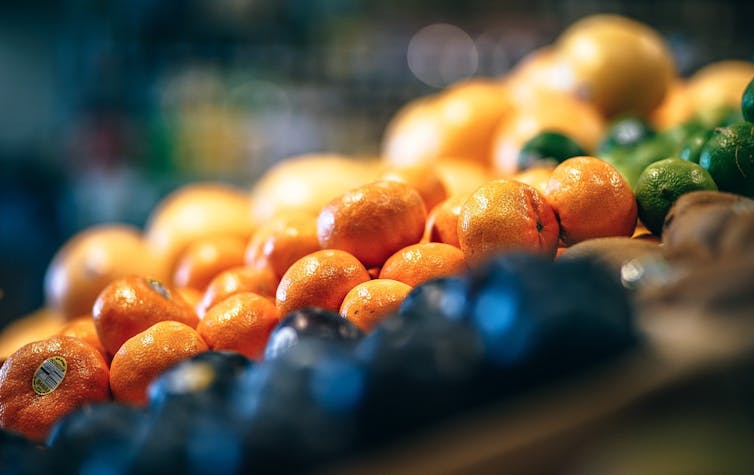Food
How to prevent disruptions in food supply chains after COVID-19

(Pixabay)
Almost all businesses involved in the food supply chain have experienced effects ranging from a mild shock to severe disruptions during the COVID-19 pandemic, and further disruptions may be ahead during the second wave.
Yet not all organizations have learned critical lessons, and history shows us some companies are destined to remain unprepared for the next waves.
Many companies have taken decisive action to survive the pandemic and enhance their supply chain resilience. In doing so, they are protecting their interests and those of their business customers or consumers. We believe that successful firms are taking what’s known as a systems thinking approach to enhance food supply chain resilience.
In the systems engineering world, systems represent the interconnected complexity of ecosystems that are connected both internally and externally.
For example, a food production business is connected to numerous ecosystems internally and to those of their suppliers, business partners and customers.
Businesses have varying degrees of inter-dependence on infrastructure ecosystems outside of their direct control, such as the power grid, telecommunications and internet service providers. Other ecosystems include banking and insurance, logistics and technology providers and various levels of government that provide inspections, permits and approvals.
The cascading consequences of an outage, failure or cyberattack in any one of these interconnected ecosystems can be catastrophic for any food business.
Snowball to an avalanche
When a seemingly small disruption occurs within a company — such as a production line stoppage — the impact may be felt far and wide in the food supply chain. We can view a disruption like a tiny snowball that starts to roll down a mountain and may result in a catastrophic avalanche.

(Piqsels)
Disruptions can result from actions or decisions of individuals, departments or organizations. For example, in Canada, the government food safety inspectors union, citing health and safety concerns, refused to allow its members to enter meat-processing plants experiencing COVID-19 outbreaks.
Like the aforementioned snowball, this decision contributed to a disruption — the plant’s closure — with complex, unintended and potentially devastating outcomes and far-reaching implications, including domestic beef supply and exports. The outbreaks in geographically concentrated meat-processing plants in Alberta resulted in approximately 75 per cent of the Canadian beef supply going offline when three Albertan facilities closed temporarily.
That disruption sent ripples through food services and grocery businesses nationwide and resulted in consumer concerns about food security and increasing prices.
It’s been noted that Canada’s failure to invest in and adopt digitalization accounted for 85 per cent of the technology investment gap between the United States and Canada, and has contributed to Canada’s lagging productivity. When that lack of digitalization is coupled with poor interconnectivity among supply chain ecosystems, it results in food uncertainty concerns.
Food uncertainty is knowing we have enough food but without the visibility to know where it is in the supply chain. These concerns have led to calls for enhanced supply chain resilience through digitalization.
Avoid internal silos
To enhance food supply chain resilience during the pandemic, companies should be using systems thinking to consider the unique requirements of food supply subsystems (livestock, for example) and to prepare for potential systems shocks in these interconnected ecosystems.
We believe it’s vital to look through a systems lens to understand how future food chains should interact and how risk should be managed. This is particularly critical as we confront a second wave of COVID-19 and the threat of additional disruptions.
Many organizations have internal silos that barely communicate with other divisions or subsidiaries often dependent on their decisions or output. Using the metaphor of the snowball, without an adequate avalanche detection system, organizations are at a higher risk of a shock or significant disruption.
That’s mainly because timely, actionable information is not being captured and shared within and across organizations, and because no one has contemplated the potential cascading consequences of interconnected system failures.
Digitalization and systems thinking
Systems thinking can help organizations to visually map their business’s ecosystems landscape. Once this is done, they can examine or simulate where a failure or system shock may come from.
A business should assess its foundational requirements as it determines how to use technology to provide early warnings of potential disruptions.
When businesses apply advanced or predictive analytics tools, such as artificial intelligence and machine learning, these tools can provide invaluable pre-alerts of potential disruptions before they happen, and allow for a course correction. This is akin to GPS warning a driver of an obstacle on the road ahead or traffic congestion with a suggested change of route.
In the figure below, we build on 2013 empirical research from logistics scholars John R. MacDonald of Michigan State University and Thomas M. Corsi of the University of Maryland by visualizing these advanced warning systems that we call tripwires and circuit-breakers.
The circuit-breakers are analogous to the GPS providing a suggested change of route — they help companies correct a disruption before it cascades out of control. For example, closing a food-processing plant for sanitization purposes to address an outbreak is a circuit-breaker intervention.
Advances in technology require organizations to continually adapt to new ideas, innovations and methodologies. There is no doubt that many businesses employ brilliant people and technologies, and they just work fine in everyday situations.
Unfortunately, we’re living in an unprecedented era of social and economic turmoil and must react accordingly with a strategic, holistic, agile systems view. For food chain resilience, that approach must include integrated early detection alerts and rapid course-correction capabilities.
This article was co-authored by Karen J. Hand, Founder and President of Precision Strategic Solutions in Guelph, Ont., and Carl “CJ” Unis, a systems engineer in Albuquerque, N.M.![]()
John G. Keogh, Strategist, Advisor, Academic Researcher, University of Reading
This article is republished from The Conversation under a Creative Commons license. Read the original article.





















